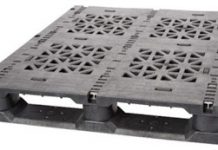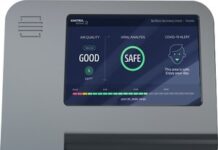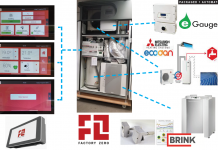by Debra Fiakas CFA
Investors who in the small-cap sector are familiar with the profile: a company with a great invention that ends up with a business narrowly-focused on a particular market or customer group. If it is a public company, the stock price is equally thin – if it trades at all. Energy Recovery (ERII: Nasdaq) is one of those slender stocks.
Over the last year ERII has traded in a relatively tight range between $3.50 at the high point and $1.55 on the low side. The stock is seemingly stranded today 29.4% off the high. Investors have simply stayed away, barely registering 100,000 shares per day in average trading volume. While short interest is not particularly high – equal to just 10% of shares not held by insiders – short sellers have persistently stalked Energy Recovery.
Critics of Energy Recovery had zeroed in on the risks on the desalination market. While clearly a promising opportunity in the long-term given the shortage of potable water in the world, the desalination market is also highly focused. Middle Eastern countries rely to a great extent on desalination, but the Arab Spring has slowed progress on new projects. Another key desalination area, California, has out of the market for the time being by fiscal issues. Credit for project developers has been difficult during the European debt crisis. Thus any company that puts all its eggs into the desalination basket is vulnerable.
All those woes have overwhelmed investors’ enthusiasm even for a product line cloaked as social redeemable. Energy Recovery produces pressure exchangers that are installed to reduce energy consumption in desalination plants using reverse osmosis technology. While growing in popularity – reverse osmosis now commands at least 40% to 45% of the desalination market – it is a process that requires pumping large amounts of seawater through membranes that filter out the salt. Any process that requires the use of “large” and “pump” together will ring up a big electric bill. Energy Recovery’s pressure exchange device recaptures energy in the waste brine stream and transfers it back into the incoming stream of seawater. The action saves 60% of the energy requirement, significantly improving the economics of seawater desalination.
Energy Recovery also has some competition. First, producers of reverse osmosis systems are continuously tweaking the overall design, trying to find the most energy efficient configuration. These include IDE Technologies, Hyflux, and Doosan among others. Producers of the membranes, which are the business end of reverse osmosis action, are also trying to improve the marketability of their membranes with at least a partial fix for energy issue. Dow Chemical (DOW: NYSE) leads the membrane market, followed by Nitto Denko’s Hydronautics and Toray.
There are also other types of energy recovery devices. FlowServe Corp. (FLS: NYSE) sells Duel Work Exchange Energy Recovery devices or DWEERs for short. Fluid Equipment Development Company (FEDCO) is a seller of reverse osmosis equipment and has developed energy efficiency solutions.
Any company faced with the twin threats of technology obsolescence and competing products should be scrambling to dig a moat of some kind. I cannot say Energy Recovery management actually scrambled. However, they have moved to protect the company through diversification. Energy Recovery acquired Pump Engineering LLC in 2009, adding turbochargers and pumps to the product line. The addition has given the company a foot in the door of customers in the oil and gas industry. Now Energy Recovery can market is energy solution for gas processing systems, which capitalizes on the company’s pressure exchange technology.
I think this is a significant move forward for Energy Recovery, since the oil and gas market is populated by many participants as potential customers. It is not subject to the same capital and credit market influences that sidelined the desalination industry. I expect sales to oil and gas customers to help drive the top-line in coming years.
Investors appear largely unimpressed with Energy Recovery’s expansion attempts. Ever the contrarian, my firm continues to have a buy rating on ERII and our trading guide suggests aggressively adding to positions at prices below $3.00.
Debra Fiakas is the Managing Director of Crystal Equity Research, an alternative research resource on small capitalization companies in selected industries.
Neither the author of the Small Cap Strategist web log, Crystal Equity Research nor its affiliates have a beneficial interest in the companies mentioned herein.








